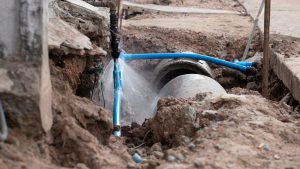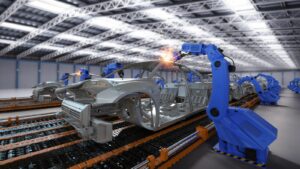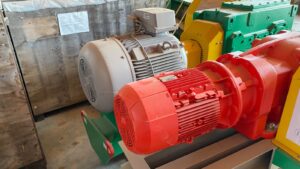The recent technological revolution led to the birth of a cluster of digital solutions that assist manufacturing firms in a variety of different scales. Manufacturing performance depends on the health of inhabited equipment and the efficiency of the product lines from one plan to another. Previously machine developers used three main ways of analysing how successfully would a machine perform in a manufacturing firm:
- They would use the ‘run to fail’ concept where they would spontaneously face unplanned downtime while working in the factory.
- Or else, they would guess the time, manner, and place of intervention to prevent probable machine failure,
- Or use preventive analysis which is usually maintained in a tight time-based schedule.
But compared to all these methods, predictive maintenance is the best option that is available nowadays.
So how can Predictive maintenance help in advancing the production plants?
What is Predictive Maintenance (PdM)?
Predictive Maintenance is the use of plantwide data flows remotely- which are usually an ocean of heterogeneous data packets- to analyse the performance of factory equipment that will avoid expensive results. It wipes off uncertain events by providing reliable digital predictions, such as:
1. Equipment Lifespans
Predictive maintenance systems can analyse the lifetime of equipment (legacy equipment included), machine performance depreciation per year can be fed, and the manufacturing firm can thoroughly analyse the total lifetime and salvage costs that could be gained by the machine. The equipment’s historical performances can be calculated by predictive systems, allowing this system to interpret data that has not been acquired by the company before.
2. Appropriate Resource Consumption
Many companies unknowingly invest a lot in resources that are excessively used by companies. Saving resource costs and minimising wastes would lead to smart cost allocations by the manufacturing firm.
3. Reducing unexpected downtimes and optimising expected downtimes
Predicting equipment rather than preventing downtime after machine failures are very important for manufacturing firms. Since the whole success of the firm relies on ‘Spotless Production’, the refined flows of product lines and high-performing equipment must be there to avoid downtimes. Downtimes on the verge of urgent production can be a reason to spur plant deviances that would take a lot of time, effort, and money to compensate.
But since all equipment would have to face downtimes at one point of performing, knowing when they would be declining their performance is very important. So, in short, predictive maintenance will let you know what is going to happen before it happens.
4. Enhancing employee retention
When employees’ work is being made easier, with technologies and predictive tools to assist them in not having a ‘bad work-day’, they would be encouraged to work in the plant since their efforts are minimised along with their stresses and doubts.
5. Maintains streamline efficiencies
Streamline product flows can be allowed in Warehouses if they are upgraded by AI tech and predictive maintenance systems that will automate everything in the industry up to the point that no or very minimal human intervention will be required.
6. Prioritisation
Factory machinery can be analysed according to its urgency to be probed. For example, if a machine is in a critical stage compared to others, how the checkups for better performing machines must be skipped, and the focus should be kept on critical assets that need immediate attention.
Common Issues that have been justified by Predictive Maintenance systems
- Are our probable target productions reached?
- Are our technicians over-skilled or under-skilled in handling this equipment?
- Does our manufacturing firm have the right spare parts at the right time?
- When will equipment ‘A’ need to be checked for performance rates?
- Which are worth being documented? What should be accessed all the time?
- How many resources are acquired by our factory?
- What are the critical assets that we need to focus on in plants X?
Considering all the perks that are resulted in predictive maintenance systems, adopting a reliable system for your business is, therefore, a must-equip solution. Having a strong stance with predictive abilities would make your organisation resilient to cautionary economic downfalls and bestow you with the best competitive advantages in your industry.
Pair with the best innovative digital solution providers, Tigernix, to help you develop the best personalised, predictive maintenance modules for your Administrative systems.







